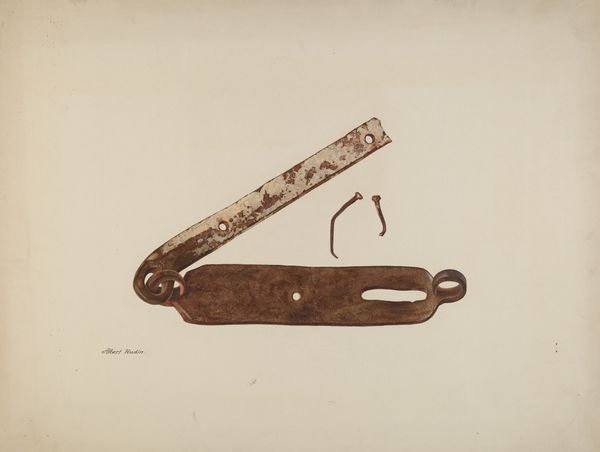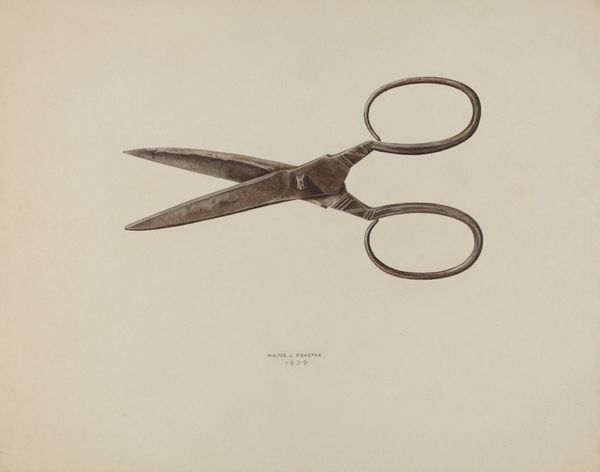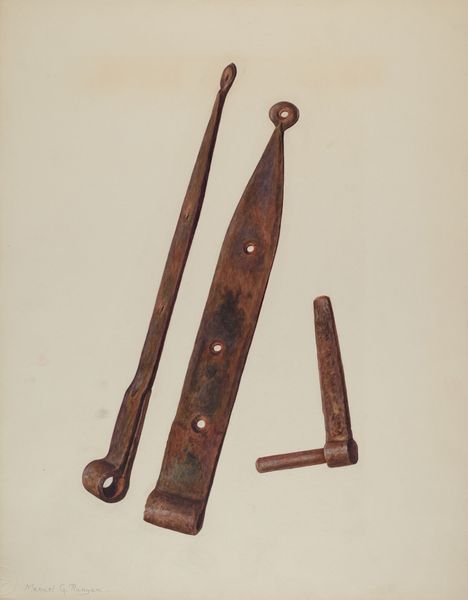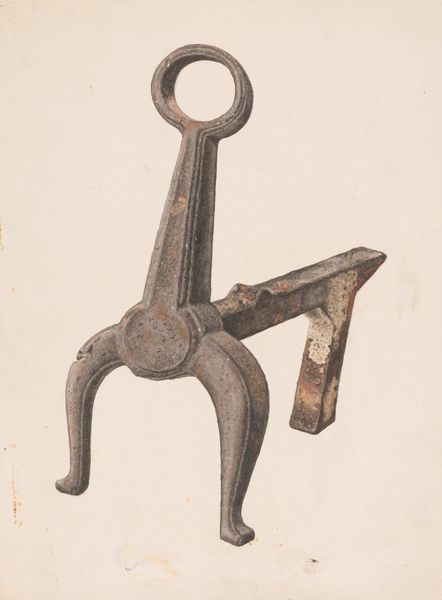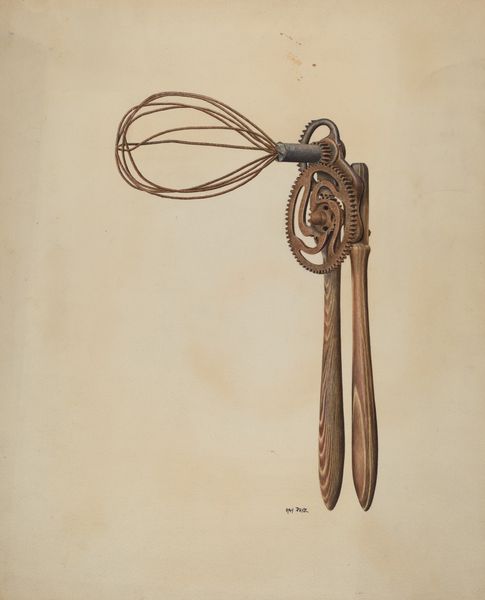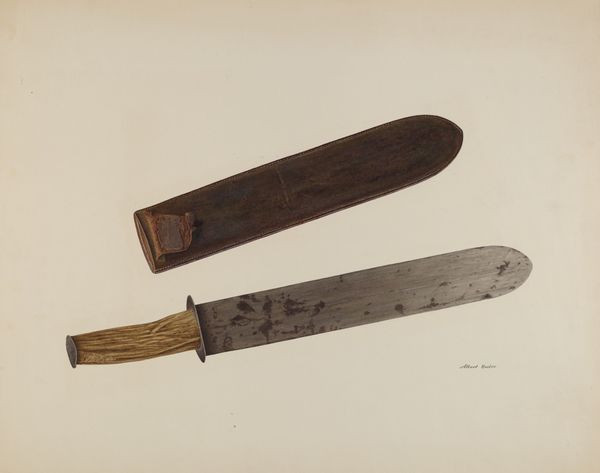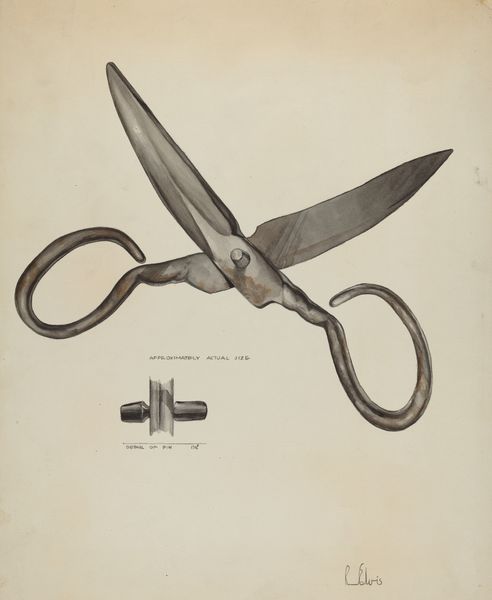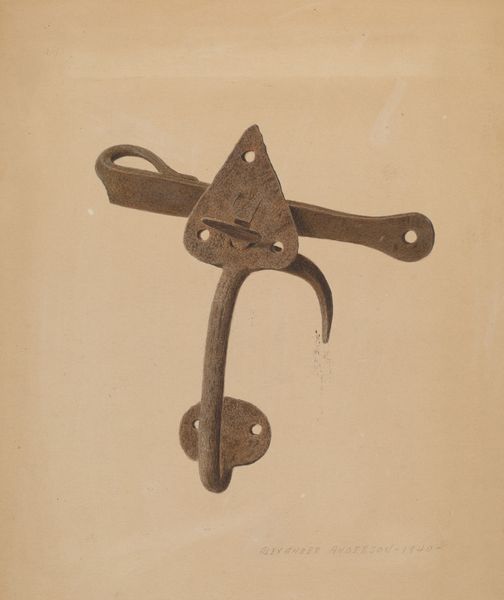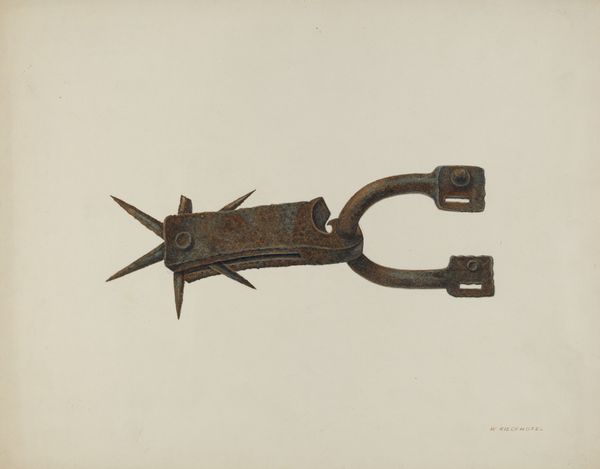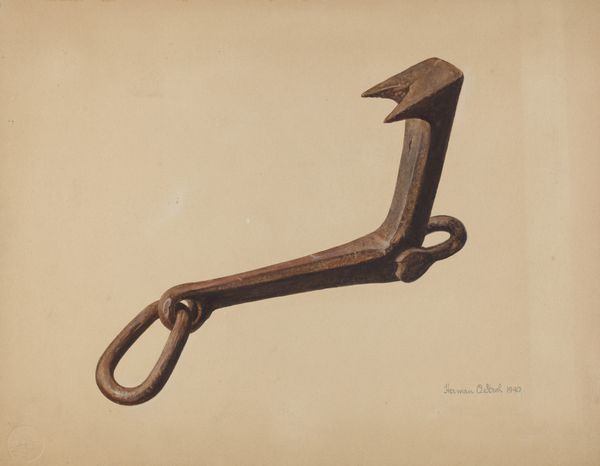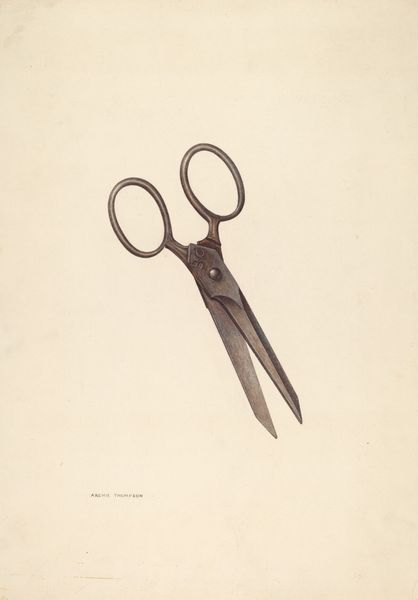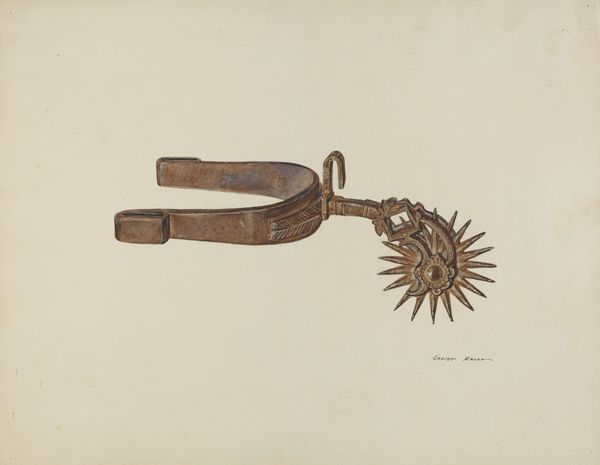
drawing, pencil, graphite
#
drawing
#
pencil drawing
#
pencil
#
graphite
#
graphite
Dimensions: overall: 50.5 x 39.5 cm (19 7/8 x 15 9/16 in.)
Copyright: National Gallery of Art: CC0 1.0
Curator: Ah, I'm drawn in. At first glance, these graphite lines give off such an air of gentle stillness. They remind me of my grandmother's sewing room...a space of creation and quiet purpose. Editor: I agree that this pencil drawing from around 1939 has an unassuming presence. It's John Bodine’s, “Tailor’s Shears and Iron.” Immediately, I see the history of production; the means to clothing a community through industry and labor. Curator: Yes! They’re so...mundane, and yet pregnant with stories. What hands wielded these tools? What clothes did they craft? It’s strange to consider them so intimately depicted—domestic tools almost rendered monumental. I’m curious about his process, here... such an emphasis on weight and form. Editor: Consider what went into making an iron like this! Mining, smelting, forging, all feeding into textile production... It makes you think of the raw power needed to achieve delicate detail in garment making, eh? It’s beautiful that Bodine brings a renewed consideration for labor and craft that’s often overlooked. Curator: Absolutely. Look at how the graphite captures the cool, smooth glide of the shears in contrast with the dark, solid heft of the iron. They speak of different qualities but, when combined, they make something wearable! I can't help but imagine the satisfying snip of the shears through fabric and the smoothing of hot metal… Editor: What fascinates me is the elevation of such workaday objects, the tools of creation by unseen hands—making them visible to us in this almost heroic scale on the page, as opposed to hiding away in someone’s shop, workshop, or home. The materials themselves become highlighted. Curator: True. They've both clearly felt the touch of hands, now immortalized in gentle graphite on paper… such a striking yet humble meditation on work. A moment of reflection amidst the bustle of, well, tailoring. Editor: Indeed, Bodine gives these everyday objects their due by revealing the history held within, highlighting not the clothing but its direct production through these instruments, revealing a tactile perspective that begs to be considered in everyday making. It prompts appreciation for things as they truly exist—and the hands that utilize them to be so valuable.
Comments
No comments
Be the first to comment and join the conversation on the ultimate creative platform.
